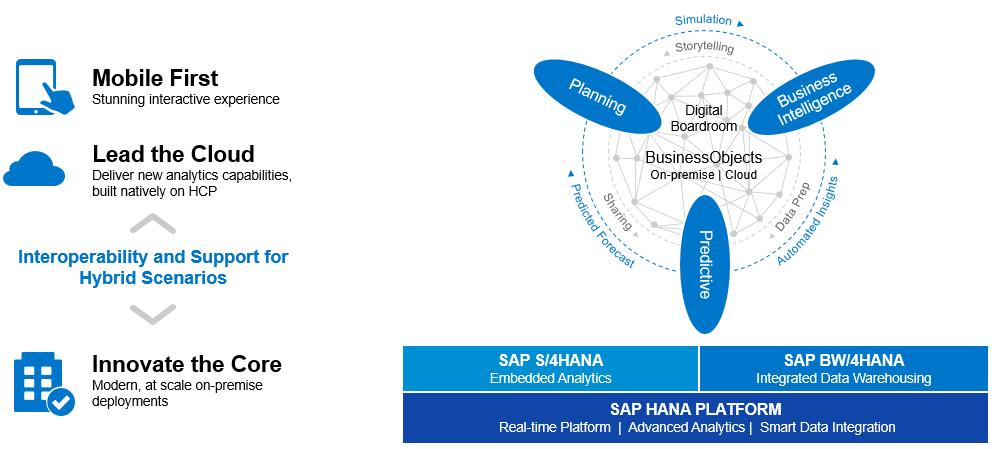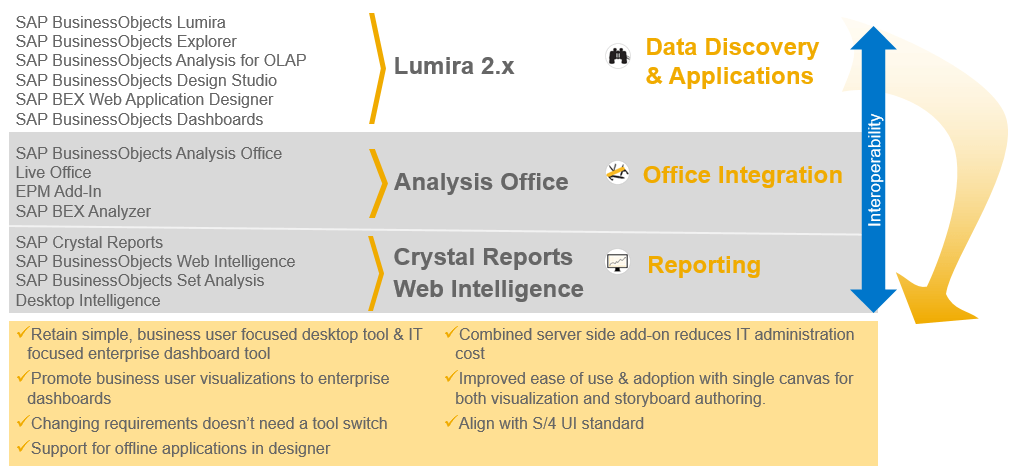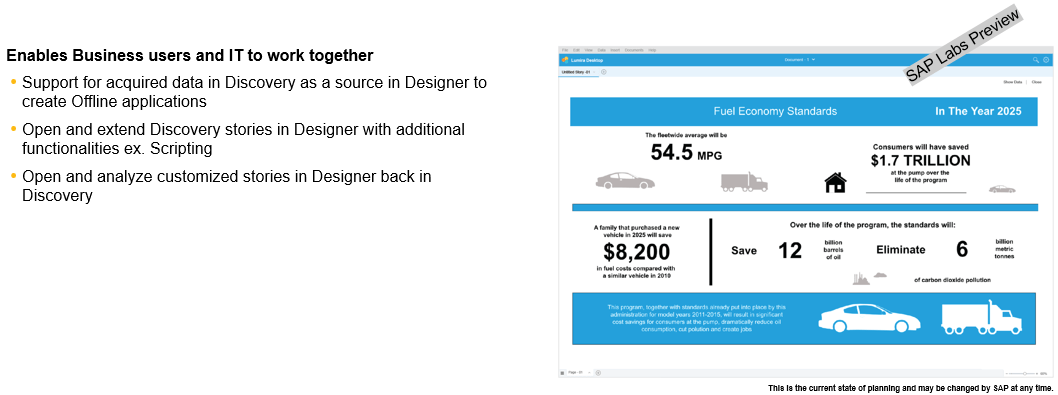your journey
Introducing SAP BusinessObjects Lumira 2.0
Good article from Ina Felsheim from SAP.
The SAP Analytics strategy revolves around Insight, Decision, and Action. You can hear the details of the strategy here, at the recorded #askSAP webcast. In a nutshell, SAP want to help you uncover new insights to help transform your business—and then turn those insights into new decisions and actions.
SAP firmly believe in cloud. However, many customers tell us they are either very early in their cloud journey, or are unsure where to start. SAP have you covered there, too. Not only do SAP believe in a beautiful, mobile-first cloud experience, but also continue to innovate in our on-premise solutions, too (see Innovate the Core in the graphic below).

For more details, see the SAP On Premise BI Statement of Direction
Self-service Analytics and the SAP strategy
A key dimension of the SAP strategy is self-service analytics, whether your analytics team is using cloud or on-premise solutions. Self-service analytics is a sub-set of your overall analytics strategy and can use the same best practices framework, but specifically focused on self-service. For an in-depth look at self-service analytics, check out this blog series on self-service BI.
One key is that self-service analytics appears differently to different users. The key is to make sure you are working with your BI Competency Center to identify how the requirements vary by use case and user. These are common use cases, grouped by user types: make sure to clarify what your users mean when they request self-service BI capabilities.
Self-service analytics absolutely requires solutions for Business users and decision makers, dashboard composition for business users, data discovery for casual users, and IT enablement.
SAP BI Solutions
Because self-service analytics can be so varied by your user base, SAP provide solutions tuned to the specific personas and use cases required. As you saw in the SAP On Premise BI Statement of Direction referenced earlier, SAP are converging on premise solutions around SAP BusinessObjects Lumira, SAP BusinessObjects Analysis for Microsoft Office, SAP Crystal Reports, and SAP BusinessObjects Web Intelligence.

Because these clients all use the BusinessObjects BI platform as a solid, scalable foundation, you get interoperability between the solutions, too. For an overview of the BI Platform, check out the BI 4.2 solution brief.
What is SAP BusinessObjects Lumira?
SAP BusinessObjects Lumira is a new release that converges the clients for data discovery and applications into one solution. This convergence helps bring IT and Business together for agile innovation through a consumer-grade UX and impressive capability to access all data in the moment.
With SAP BusinessObjects Lumira 2.0, SAP have put extra work into the interoperability elements of our strategy. With this release, SAP have simplified the workflows between data discovery and creating analytics applications and dashboards. These two self-service analytics styles will now not only share a server component, but will only have one file format. This means your business users can actively prototype their analytics applications and dashboards in an easy, intuitive environment. When complex navigation or integrated planning is required, for example, your power users can open the exact same file in Lumira Designer to add that capability. No passing back and forth of requirements. No prototyping in a drawing tool or PowerPoint.

As you can see, SAP BusinessObjects Lumira is a key component of the SAP analytics strategy going forward!
What to do next
In the next months, you’ll be hearing many more details on SAP BusinessObjects Lumira. SAP are briefing customers and user groups on the solution, and the interest has been nothing short of inspiring! While you eagerly wait for more details, here are a few key activities you can start to get ready.
- Run a holistic Analytics Strategy workshop: sap.com/bistrateg:
> Establish your data strategy
- Get ready for the newest innovations by upgrading to BI 4.2.
- Check out tutorial videos on YouTube and SCN
- Check out the roadmap on sap.com: sap.com/roadmaps
Share this:

Neil ran his first SAP transformation programme in his early twenties. He spent the next 21 years working both client side and for various consultancies running numerous SAP programmes. After successfully completing over 15 full lifecycles he took a senior leadership/board position and his work moved onto creating the same success for others.